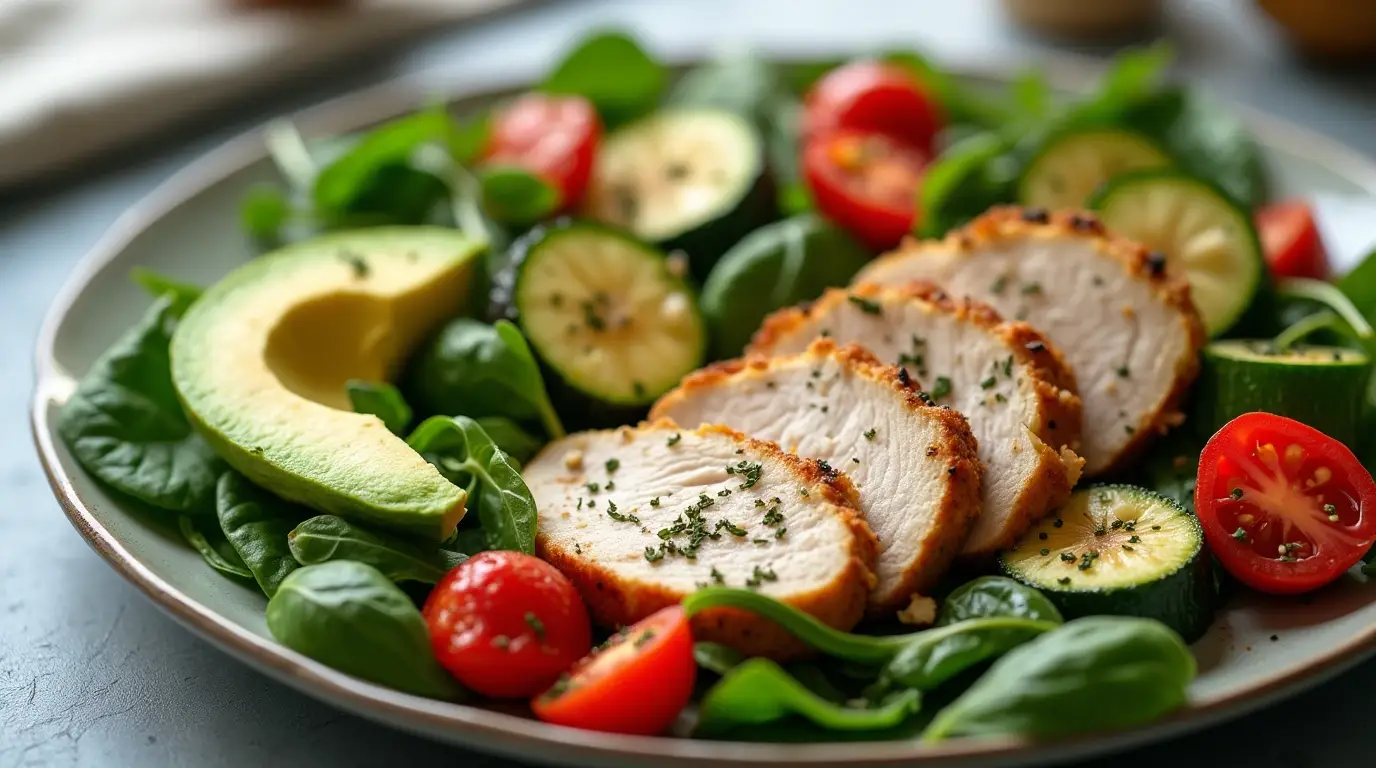Table of Contents
Introduction
Is it possible to enjoy dinner without feeling guilty about your blood sugar levels? If you’ve been diagnosed with diabetes, meal planning can often feel like a juggling act. You want something tasty and satisfying, but you also need to stay mindful of your health. This is exactly why diabetic-friendly dinner recipes are so important! They allow you to enjoy your meals while managing your blood sugar levels.

I understand that cooking for diabetes can feel challenging at times, but trust me, there are so many delicious and simple recipes you can try. And don’t worry — they don’t have to be bland or complicated! Whether you’re new to diabetic-friendly meals or an experienced home cook, this recipe guide will provide easy, delicious options to keep you satisfied and energized.
Let’s dive into some flavorful, healthy, and simple dinner ideas for diabetics. These meals are full of low-carb, fiber-rich, and nutrient-packed ingredients that taste amazing without spiking your blood sugar. Plus, I’ll guide you through everything from prep to serving, and even offer a few tips and variations to make your meals more exciting!
Key Benefits of Diabetic Dinner Recipes
Before we get into the recipes, let’s talk about why diabetic-friendly dinner recipes are so important. It’s not just about cutting back on sugar, but also about making food choices that can help maintain balanced blood sugar levels and promote overall health. Here are a few reasons why these meals are beneficial:
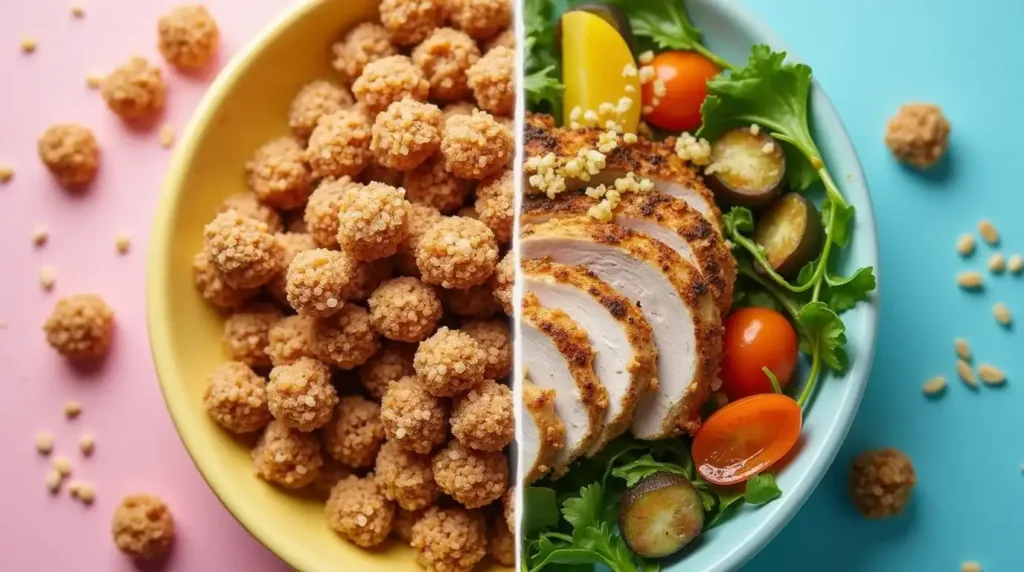
- Blood Sugar Control: By choosing foods that are low in simple sugars and high in fiber, you can help regulate your blood glucose levels.
- Increased Energy: Healthy meals that balance protein, healthy fats, and fiber provide sustained energy throughout the day, keeping you from feeling sluggish.
- Weight Management: Diabetic-friendly meals often focus on whole foods and healthy ingredients, which can help with portion control and weight management.
- Reduced Risk of Complications: Managing your blood sugar through smart eating choices can help reduce the risk of diabetes-related complications like heart disease, kidney issues, and nerve damage.
- Variety and Flavor: Diabetic meals are far from boring! You’ll be amazed at how flavorful meals can be when you focus on whole, fresh ingredients.
So, ready to get cooking? Let’s move on to the ingredients and preparation tips.
Ingredients
For this recipe, we’ll focus on ingredients that are heart-healthy, diabetes-friendly, and easy to find at your local grocery store. No complicated or hard-to-pronounce ingredients — just good, wholesome food.
For our diabetic-friendly dinner recipe, you’ll need:

- Chicken breast (skinless): A lean protein that’s low in fat and high in nutrients.
- Olive oil: Rich in healthy fats that support heart health.
- Garlic cloves: Adds flavor and has antioxidant properties.
- Zucchini: A low-carb vegetable that’s high in fiber.
- Spinach: Packed with vitamins, iron, and fiber.
- Cherry tomatoes: Full of antioxidants and a touch of sweetness.
- Quinoa: A whole grain that’s a good source of protein and fiber (it’s a great low-carb substitute for rice).
- Lemon juice: Adds a tangy flavor to brighten up the dish.
- Herbs and spices (like basil, thyme, and black pepper): To enhance flavor without adding sugar.
Optional Add-Ons:
- Avocado slices: A creamy, heart-healthy fat to top off your dish.
- Low-fat cheese: For some extra flavor and protein.
By using fresh ingredients like these, you’ll create a well-balanced meal that’s both satisfying and good for you.
Instructions
With all your ingredients prepped and ready, it’s time to start cooking! Here’s a simple step-by-step guide to creating your diabetic-friendly dinner:
- Prep the Chicken:
- Start by seasoning the chicken breasts with salt, pepper, and a dash of your favorite herbs (I recommend thyme and basil).

- Heat a tablespoon of olive oil in a skillet over medium heat.

- Once the oil is hot, add the chicken breasts and cook for 6-8 minutes per side until fully cooked through (the internal temperature should reach 165°F).

- Once cooked, remove from the skillet and set aside to rest.

- Sauté Vegetables:
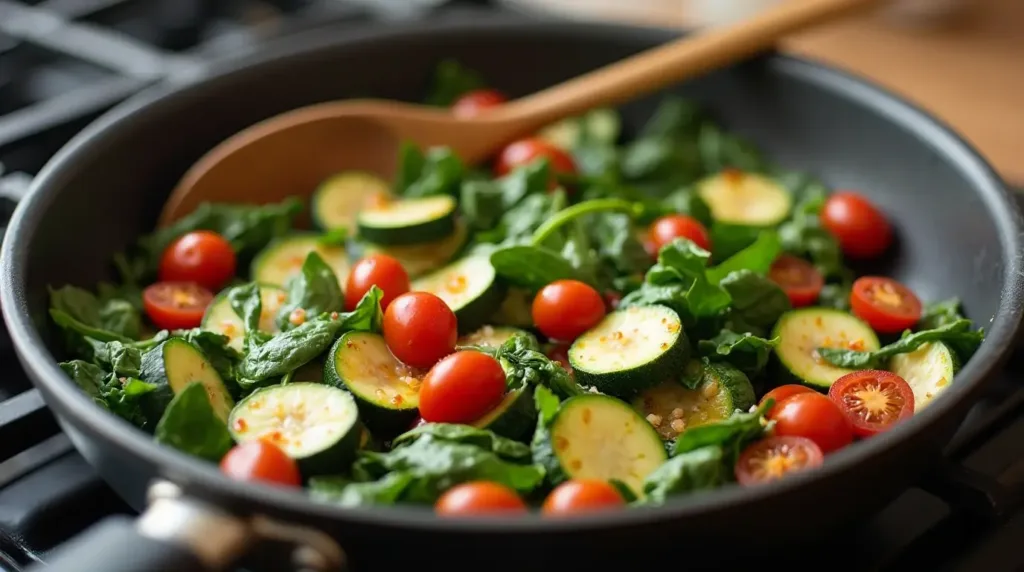
- In the same skillet, add another drizzle of olive oil.
- Toss in the garlic and sauté for about 30 seconds until fragrant.
- Add the zucchini and cook until slightly tender (about 4-5 minutes).
- Throw in the spinach and cherry tomatoes and cook for another 2-3 minutes until the spinach wilts.
- Cook the Quinoa:
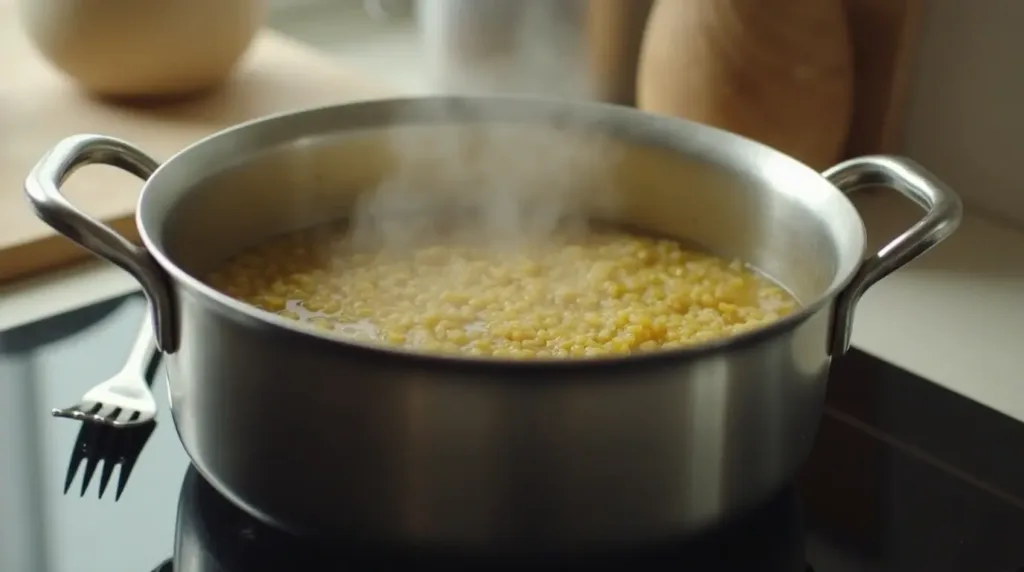
- While your chicken is resting, cook your quinoa. Follow the package instructions, but instead of water, use a vegetable broth to give it more flavor.
- Once cooked, fluff the quinoa with a fork.
- Assemble the Plate:
- On each plate, place a bed of quinoa and top with the sautéed vegetables.
- Slice the chicken breast into thin strips and lay it on top of the veggies.
- Drizzle with fresh lemon juice, and if you like, top with a few slices of avocado for added creaminess.

And there you have it — a delicious, balanced, and diabetic-friendly dinner that’s full of flavor and nutrients. It’s a meal that will leave you feeling satisfied without any blood sugar spikes.
Pro Tips and Variations
- Switch up the Protein: If you don’t eat chicken, you can easily substitute it with fish (like salmon or tilapia) or tofu for a plant-based option.
- Make it Spicy: Add a pinch of red pepper flakes to the sautéed vegetables for a little kick.
- Swap Quinoa for Cauliflower Rice: If you’re looking to lower the carbs even further, swap out quinoa with cauliflower rice for a lighter option.
- Add More Veggies: Feel free to experiment with other low-carb veggies like bell peppers, eggplant, or broccoli.

Serving Suggestions
This dish pairs beautifully with a simple side salad made with leafy greens, cucumbers, and a light vinaigrette. You could also serve it alongside roasted sweet potatoes for a comforting, fiber-packed side dish.
Another great idea is to enjoy it with a glass of unsweetened iced tea or sparkling water with a lemon wedge for a refreshing, no-sugar beverage option.
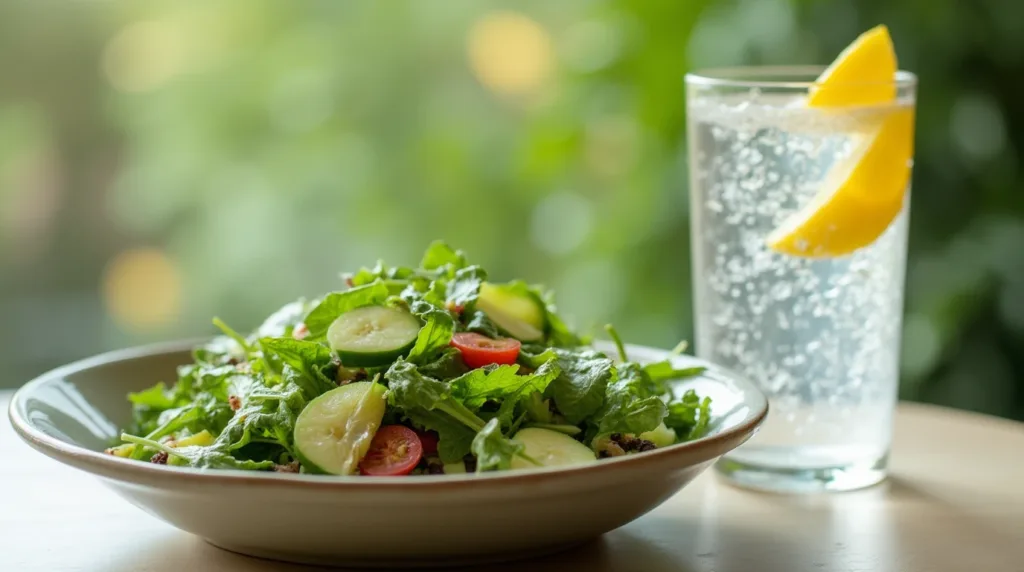
Troubleshooting Common Issues
Cooking for diabetes doesn’t have to be stressful, but there are a few common hiccups people run into:
- My Chicken is Dry: Chicken breast can sometimes dry out if overcooked. Make sure to cook it just until it reaches 165°F, and let it rest for a few minutes before slicing.
- Quinoa is Too Mushy: To prevent quinoa from becoming mushy, make sure to follow the cooking instructions closely. Use a 2:1 liquid-to-quinoa ratio and avoid overcooking it.
- Vegetables Are Soggy: Don’t overcook your veggies! Sauté them just long enough to retain their crunch and nutrients.
Conclusion
Eating diabetic-friendly meals doesn’t have to mean sacrificing flavor. This simple and healthy dinner recipe is a perfect example of how delicious, low-carb meals can fit seamlessly into a diabetic-friendly lifestyle. By using fresh, nutrient-rich ingredients, you can create satisfying meals that help manage blood sugar levels without compromising on taste.
Remember, cooking for diabetes is about balance and making conscious choices that support your health. With just a few small changes, you can enjoy a variety of meals that taste good and make you feel great.
Recipe Recap
Recipe Details:
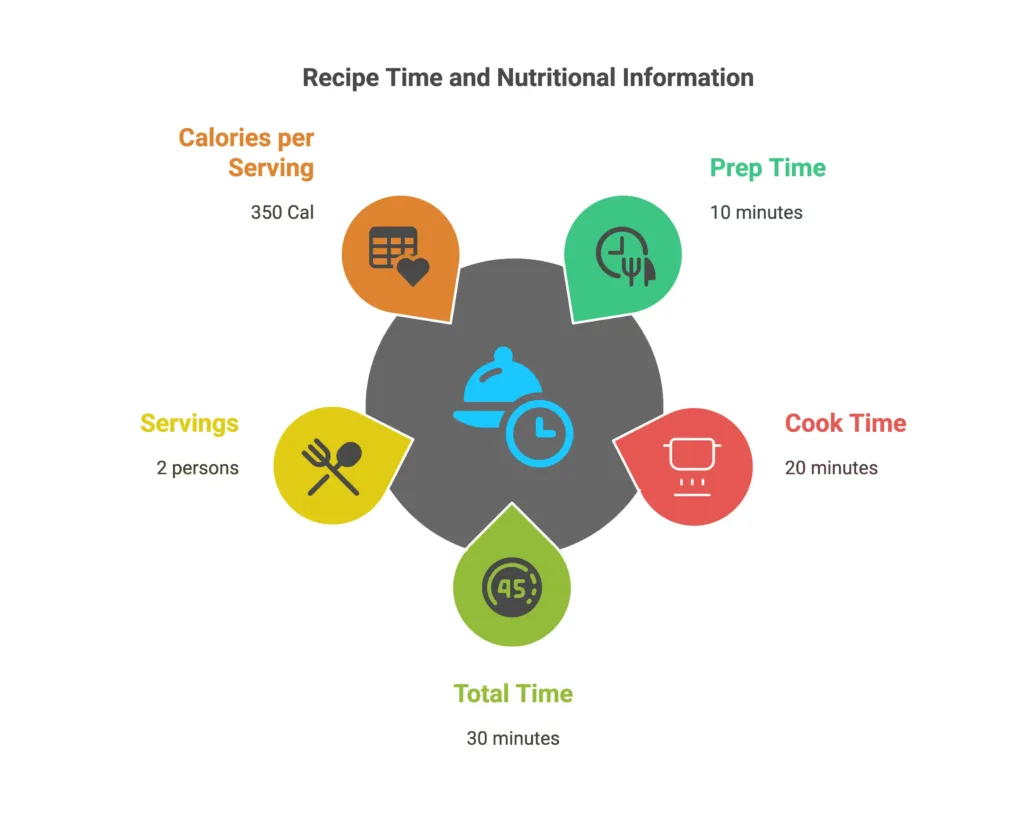
Nutrition Information (per serving):
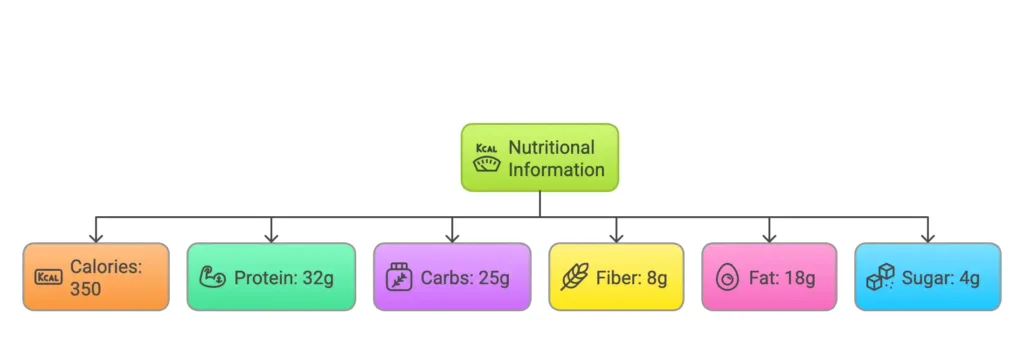
Categorize the recipe:
- Course: Main Dish
- Cuisine: American
- Diet: Diabetic-Friendly, Low-Carb
- Method: Sauté, Roast
- Keyword: Diabetic Dinner, Low-Carb Recipe
- Skill Level: Easy
FAQs
Q1: Is this recipe suitable for prepping in advance?
Yes! You can easily cook the chicken, vegetables, and quinoa in advance. Store them separately in the fridge for up to 3 days, and just reheat when you’re ready to serve.
Q2: Is quinoa the only option for this recipe?
Not at all! You can use cauliflower rice, brown rice, or even chickpeas if you’re looking for a different texture or flavor.
Q3: Can I make this recipe vegetarian?
Absolutely! Just swap the chicken for tofu, tempeh, or a hearty plant-based protein. You can also add more vegetables for extra texture and flavor.
Additional Resources
For more insights and research on managing diabetes with proper nutrition, explore these trusted resources:
- American Diabetes Association (ADA)
- National Institute of Diabetes and Digestive and Kidney Diseases (NIDDK)
- World Health Organization (WHO) – Diabetes Fact Sheet
- Journal of Clinical Endocrinology & Metabolism (JCEM)
- Diabetes Care – American Diabetes Association
I hope this article has inspired you to try something new in your kitchen while staying mindful of your health. Enjoy cooking, and don’t forget to share your thoughts and experiences with me! Happy cooking!

